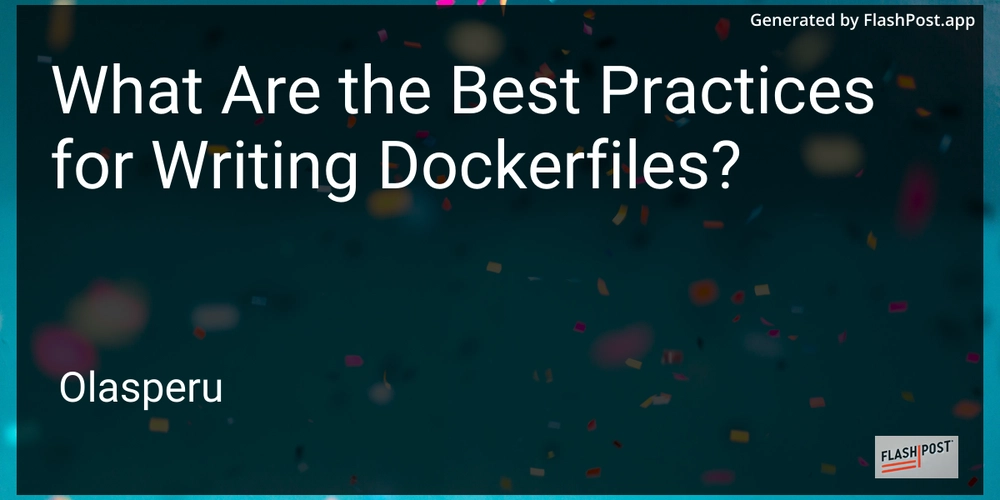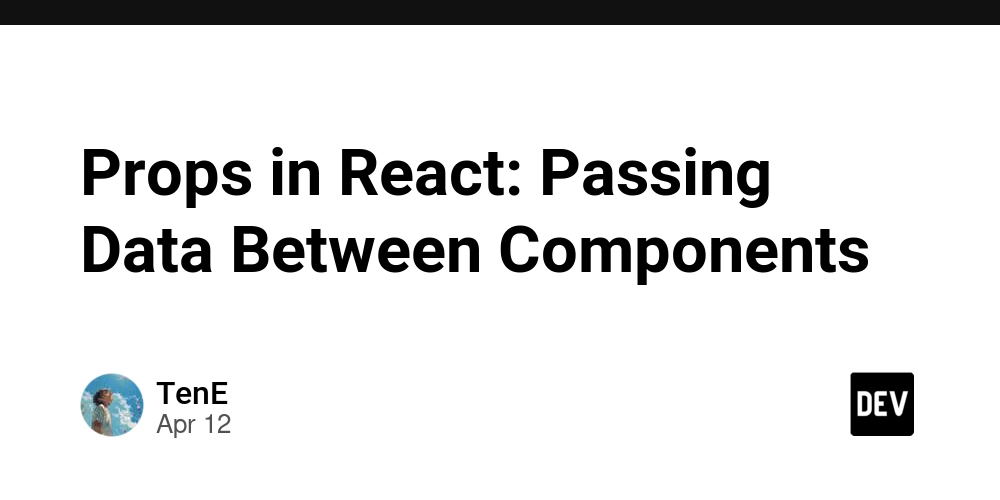Blockchain's Role in Enhancing Open Source Transparency
Abstract: This post explores how blockchain technology is revolutionizing open source development by enhancing transparency, accountability, and governance. We discuss blockchain’s core features such as immutability, contribution verification, and decentralized governance, and examine practical use cases and challenges to integration. By comparing traditional open source models with blockchain‐enhanced systems, we offer insights into the future trends and innovations that may shape the open source ecosystem. Links to additional resources—such as blockchain audit trails and blockchain and authenticity—supplement our discussion and provide further reading for enthusiasts and developers. Introduction Blockchain technology is best known for powering cryptocurrencies, but its impact extends far beyond digital money. In the open source world, a space long celebrated for collaboration and shared code, blockchain offers transformative solutions. This technology can ensure immutability, authenticate contributions, and introduce a decentralized governance system. As open source projects increasingly require robust transparency and secure funding methods, blockchain’s attributes provide both technical reliability and a new avenue for developer incentivization. In this article, we explain how blockchain’s inherent qualities can be harnessed to improve open source transparency and examine several case studies, along with the challenges and future outlook of such integration. Our insights are aimed at technical experts, developers, and those interested in software sustainability. Background and Context The Evolution of Open Source Open source software fosters collaboration by releasing source code under licenses that allow free usage, modification, and distribution. Over the past decades, communities like GitHub have enabled developers worldwide to contribute to projects, creating versatile ecosystems driven by a shared ethos. However, despite the many benefits of collective development, issues related to accountability, attribution, and transparency persist. Introduction to Blockchain Blockchain is a distributed ledger technology that records information in an immutable, time-stamped manner. Its decentralized nature means that no single party controls the data; instead, it is maintained by a network of participants. Together, these characteristics—immutability, auditability, and transparency—make blockchain ideally suited to address some of the challenges inherent in open source projects. Ecosystem Context Several initiatives and projects have already begun integrating blockchain into open source practices. Notable examples include Gitcoin and Aragon, which use blockchain for transparent funding and governance models. Developers and sponsors alike see potential in a system where every code contribution is verifiable, rewards are fairly distributed, and the governance is community-driven. Core Concepts and Features Blockchain integration in open source builds on several key features. Below, we detail the major concepts that help establish a more accountable and transparent ecosystem. 1. Immutability and Auditability Blockchain’s ledger technology ensures that once a contribution or code modification is recorded, it cannot be altered or erased. This immutable record creates a reliable audit trail and boosts accountability. Key Advantages: Security: Each record is cryptographically secured. Traceability: Every contribution includes metadata such as timestamps and contributor IDs. For a deeper dive, see blockchain audit trails. 2. Contribution Verification As open source projects grow, accurately crediting contributions can become challenging. Blockchain can store unique identifiers linked to each developer, ensuring that their work is authenticated. The system minimizes fraud and misattribution, ensuring that proper credit is given where it is due. Benefits for Developers: Enhanced reputation systems. Fair reward distribution. Learn more about this concept in blockchain and authenticity. 3. Decentralized Governance Integrating blockchain enables the creation of democratic governance models through smart contracts and decentralized autonomous organizations (DAOs). In this structure: Community members vote on key decisions such as project direction and funding. Decisions become automatically enforced by predefined smart contracts. This is essential for projects that thrive on community consensus rather than centralized control. Further insights can be found at decentralized governance in open source. 4. Incentivization with Tokens Using blockchain-based tokens to reward contributions opens up new avenues for funding open source projects. These tokens, which are distributed based on verifiable activity, help create a transparent and fair incentive system. Tokeni
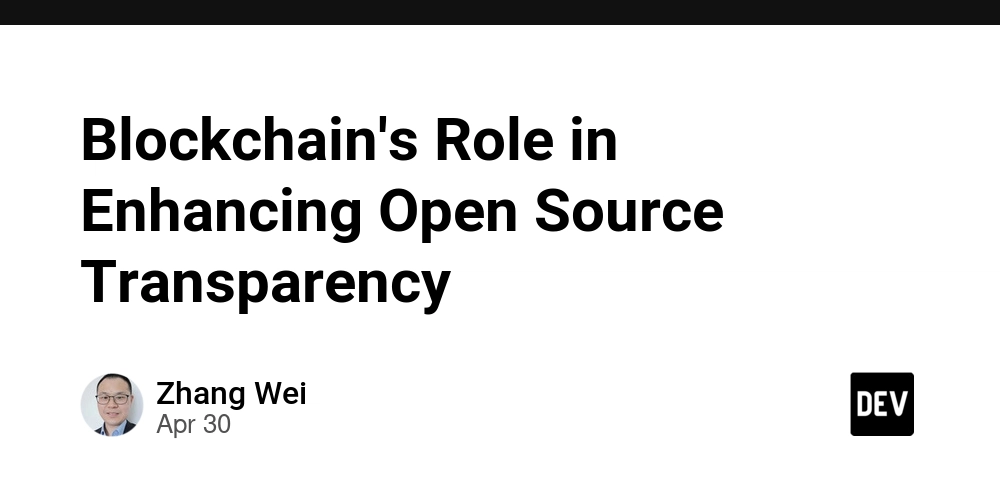
Abstract:
This post explores how blockchain technology is revolutionizing open source development by enhancing transparency, accountability, and governance. We discuss blockchain’s core features such as immutability, contribution verification, and decentralized governance, and examine practical use cases and challenges to integration. By comparing traditional open source models with blockchain‐enhanced systems, we offer insights into the future trends and innovations that may shape the open source ecosystem. Links to additional resources—such as blockchain audit trails and blockchain and authenticity—supplement our discussion and provide further reading for enthusiasts and developers.
Introduction
Blockchain technology is best known for powering cryptocurrencies, but its impact extends far beyond digital money. In the open source world, a space long celebrated for collaboration and shared code, blockchain offers transformative solutions. This technology can ensure immutability, authenticate contributions, and introduce a decentralized governance system. As open source projects increasingly require robust transparency and secure funding methods, blockchain’s attributes provide both technical reliability and a new avenue for developer incentivization.
In this article, we explain how blockchain’s inherent qualities can be harnessed to improve open source transparency and examine several case studies, along with the challenges and future outlook of such integration. Our insights are aimed at technical experts, developers, and those interested in software sustainability.
Background and Context
The Evolution of Open Source
Open source software fosters collaboration by releasing source code under licenses that allow free usage, modification, and distribution. Over the past decades, communities like GitHub have enabled developers worldwide to contribute to projects, creating versatile ecosystems driven by a shared ethos. However, despite the many benefits of collective development, issues related to accountability, attribution, and transparency persist.
Introduction to Blockchain
Blockchain is a distributed ledger technology that records information in an immutable, time-stamped manner. Its decentralized nature means that no single party controls the data; instead, it is maintained by a network of participants. Together, these characteristics—immutability, auditability, and transparency—make blockchain ideally suited to address some of the challenges inherent in open source projects.
Ecosystem Context
Several initiatives and projects have already begun integrating blockchain into open source practices. Notable examples include Gitcoin and Aragon, which use blockchain for transparent funding and governance models. Developers and sponsors alike see potential in a system where every code contribution is verifiable, rewards are fairly distributed, and the governance is community-driven.
Core Concepts and Features
Blockchain integration in open source builds on several key features. Below, we detail the major concepts that help establish a more accountable and transparent ecosystem.
1. Immutability and Auditability
Blockchain’s ledger technology ensures that once a contribution or code modification is recorded, it cannot be altered or erased. This immutable record creates a reliable audit trail and boosts accountability.
-
Key Advantages:
- Security: Each record is cryptographically secured.
- Traceability: Every contribution includes metadata such as timestamps and contributor IDs. For a deeper dive, see blockchain audit trails.
2. Contribution Verification
As open source projects grow, accurately crediting contributions can become challenging. Blockchain can store unique identifiers linked to each developer, ensuring that their work is authenticated. The system minimizes fraud and misattribution, ensuring that proper credit is given where it is due.
-
Benefits for Developers:
- Enhanced reputation systems.
- Fair reward distribution. Learn more about this concept in blockchain and authenticity.
3. Decentralized Governance
Integrating blockchain enables the creation of democratic governance models through smart contracts and decentralized autonomous organizations (DAOs). In this structure:
- Community members vote on key decisions such as project direction and funding.
- Decisions become automatically enforced by predefined smart contracts. This is essential for projects that thrive on community consensus rather than centralized control. Further insights can be found at decentralized governance in open source.
4. Incentivization with Tokens
Using blockchain-based tokens to reward contributions opens up new avenues for funding open source projects. These tokens, which are distributed based on verifiable activity, help create a transparent and fair incentive system.
-
Tokenization Benefits:
- Encourages continuous contributions.
- Ensures fair compensation. For further reading, visit blockchain tokenization.
5. Reputation Systems
A reputation system built on blockchain ensures that every contribution is publicly recognized. Such systems validate expertise and participation, creating a merit-based environment where trust and collaboration are rewarded.
Applications and Use Cases
Blockchain’s potential in open source is demonstrated by a variety of projects and initiatives that utilize the technology to enhance transparency and accountability. Below are some practical applications:
Case Study 1: Gitcoin
Gitcoin uses blockchain to fund open source software development. By allowing sponsors to contribute to projects transparently and ensuring that contributors are rewarded fairly, Gitcoin bridges funding gaps in the open source community.
-
Highlights:
- Verification of contributions through blockchain records.
- Token-based rewards that incentivize further collaboration.
Case Study 2: Aragon
Aragon implements decentralized governance models for projects, facilitating community-based decision-making. The use of smart contracts ensures that every vote and decision is recorded immutably, reducing disputes and mismanagement.
-
Highlights:
- Transparent funding management.
- Automated decision-making processes through smart contracts.
Table: Comparison of Traditional vs. Blockchain-Enabled Open Source
| Feature | Traditional Open Source | Blockchain-Enhanced Open Source |
|---|---|---|
| Auditability | Manual logging and version control tools | Immutability through cryptographically secured ledgers |
| Contribution Verification | Relies on centralized systems or manual checks | Uses unique identifiers and automated blockchain records |
| Governance | Centralized or ad-hoc community decision making | Decentralized governance via smart contracts and DAOs |
| Incentivization | Limited or non-transparent reward systems | Token-based systems rewarding verifiable contributions |
Additional Use Case: Open Source Funding Through GitHub Sponsors
GitHub Sponsors have empowered many developers financially, but combining this with blockchain can take the system further. By establishing transparent funding flows and automated reward systems, reputable projects may secure long-term, equitable support.
You can explore further details on open source funding in articles such as Unlocking the Potential of GitHub Sponsors for Developers.
Practical Benefits:
- Enhanced Trust: Every transaction and change is publicly recorded.
- Efficiency: Automatic execution of governance decisions through smart contracts.
- Sustainability: Token incentives keep contributor engagement high over long periods.
Challenges and Limitations
While blockchain offers tremendous promise for enhancing open source transparency, there remain several obstacles to consider:
Technical Complexity
Implementing blockchain-based solutions requires deep technical expertise in smart contracts, blockchain protocols, and decentralized infrastructure. Many open source projects lack the resources to integrate these technologies seamlessly.
Cost Considerations
Operating blockchain networks can involve significant fees, particularly with public blockchains where transaction costs fluctuate. For smaller projects, the cost may outweigh the benefits if not managed carefully.
Consensus and Governance
Adopting a decentralized governance structure means achieving community consensus—a process that can be contentious and slow. Disagreements on decision-making procedures may delay project progress or even lead to forks.
Scalability and Integration Issues
Integrating blockchain with legacy systems or traditional open source development platforms can present challenges in interoperability and scalability. Developers must address these technical hurdles to unlock the full benefits of blockchain.
Regulatory and Security Concerns
While blockchain offers enhanced security, it is not immune to hacking attempts or regulatory hurdles. The open nature of blockchain might expose sensitive data if not properly configured, and compliance with regulatory frameworks remains an ongoing discussion in many jurisdictions.
A valuable discussion on these aspects can be found in the article “Understanding Blockchain Forks in Depth; Insight into Protocol Divergence.”
Future Outlook and Innovations
The future of open source and blockchain integration is both promising and unpredictable. Several trends and potential innovations could shape the ecosystem in the coming years:
Expansion of Decentralized Governance
Expect to see more projects leveraging decentralized governance tools, with smart contracts becoming more sophisticated. As the community refines these models, decisions could become fully automated, resilient, and resistant to centralized abuses.
Greater Adoption of Tokenization Models
Tokenization isn’t just a method for rewarding contributions—it could evolve into a comprehensive financial model for open source projects. Tokens may integrate with traditional funding sources, providing a hybrid model that ensures sustainability and inclusive participation.
Interoperability with Other Emerging Technologies
Blockchain integrated with artificial intelligence, the Internet of Things, and cloud computing is expected to further automate and secure open source projects. For instance, AI may use blockchain-stored data to offer real-time insights, while IoT devices could benefit from immutable logs kept on a distributed ledger.
Enhanced Reputation Systems
Robust reputation systems built on blockchain could set new standards for recognizing individual expertise. This could lead to more merit-based project leadership and increased collaboration across sectors.
Increased Regulatory Clarity
As governments and institutions continue to engage with blockchain technology, clear regulatory guidelines will help mitigate risks and foster innovation. The convergence of robust legal frameworks and blockchain may ultimately lower the barrier for adoption in open source projects.
Additionally, articles such as Exploring the Hyperledger Fabric Python SDK: Open Source Funding and Community Innovation provide insights into how funding models may evolve.
Summary
Blockchain technology holds the potential to redefine how open source projects are managed. With its core properties—immutability, transparency, and decentralized control—blockchain can address long-standing challenges in tracking contributions, establishing reputations, and ensuring equitable governance. From Gitcoin’s token-based rewards to Aragon’s smart contract-driven governance, real-world applications are already demonstrating benefits.
However, while the promise is enormous, challenges such as technical complexity, cost, and resistance to change must be navigated. As regulatory frameworks become clearer and blockchain protocols continue to evolve, the combined strengths of blockchain and open source could lead to a future where collaboration is even more secure, transparent, and community-driven.
Key Takeaways
- Immutability and Transparency: Blockchain’s permanent records ensure a verifiable audit trail.
- Fair Contribution Verification: Unique identifiers help maintain data integrity and proper attribution.
- Decentralized Governance: Smart contracts and DAOs introduce automated, community-driven decision making.
- Token-Based Incentives: Transparent token rewards motivate ongoing contributions and support sustainable funding.
- Emerging Trends: The integration of blockchain with other technologies and clearer legal frameworks paves the way for further innovation in the open source ecosystem.
Bullet List: Advantages of Integrating Blockchain into Open Source Projects
- Enhanced traceability of code changes
- Improved contributor recognition and reward systems
- Decentralized decision-making processes
- Greater resilience against tampering and fraud
- Opportunities for new funding and incentive models
Additional Resources and Links
For further reading and exploration of related topics, consider visiting:
- blockchain audit trails
- blockchain and authenticity
- decentralized governance in open source
- blockchain tokenization
- the future of open source with blockchain integration
- Unlocking the Potential of GitHub Sponsors for Developers
These authoritative sources—from both License Token and Dev.to—offer deeper insights into the technical and economic impacts blockchain may have on the future of open source software.
Conclusion
In summary, blockchain technology provides a robust framework to address key challenges within the open source ecosystem. Its immutable records, transparent contribution verification, and decentralized governance models offer a compelling solution for fostering trust and collaboration in software development. While significant technical and regulatory challenges remain, continuous advancements in blockchain technology and a growing community consensus signal a transformative future. Whether you are a developer eager to enhance project sustainability or a sponsor looking for transparent avenues to support innovation, the integration of blockchain in open source is a frontier bound to reshape the landscape of collaborative software development.
By embracing these techniques, the open source community can capitalize on new funding models, ensure accountability, and drive a new era of innovation and collaboration—one that truly embodies the spirit of openness and shared progress.
Happy coding, and may your contributions remain immutable on the blockchain!


























![Epic Games Wins Major Victory as Apple is Ordered to Comply With App Store Anti-Steering Injunction [Updated]](https://images.macrumors.com/t/Z4nU2dRocDnr4NPvf-sGNedmPGA=/2250x/article-new/2022/01/iOS-App-Store-General-Feature-JoeBlue.jpg)














































![Apple Shares Trailer for First Immersive Feature Film 'Bono: Stories of Surrender' [Video]](https://www.iclarified.com/images/news/97168/97168/97168-640.jpg)
![New Hands-On iPhone 17 Dummy Video Shows Off Ultra-Thin Air Model, Updated Pro Designs [Video]](https://www.iclarified.com/images/news/97171/97171/97171-640.jpg)

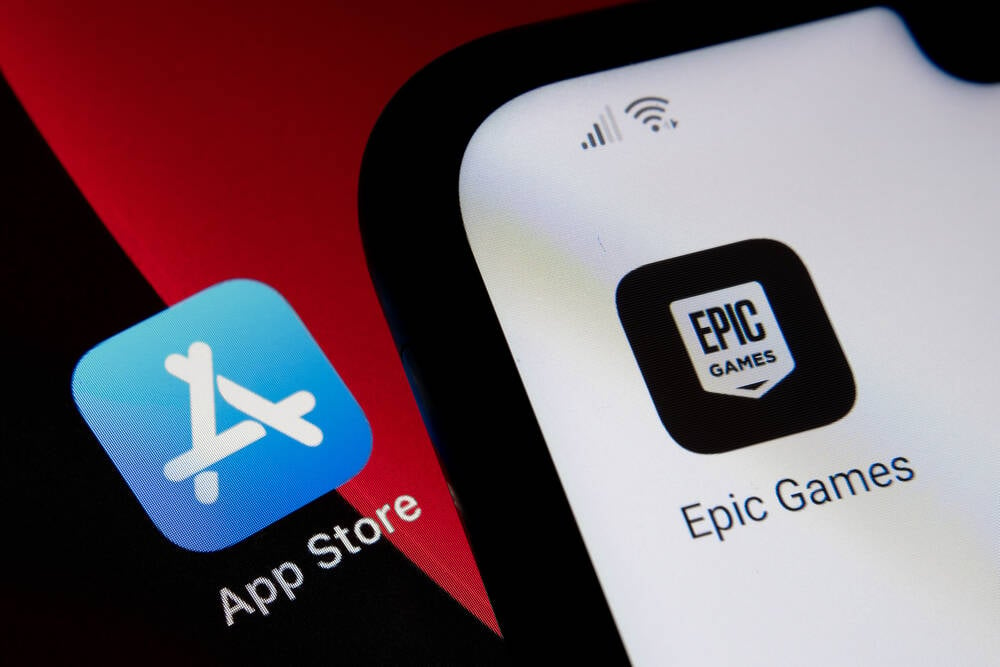










![Google Home app fixes bug that repeatedly asked to ‘Set up Nest Cam features’ for Nest Hub Max [U]](https://i0.wp.com/9to5google.com/wp-content/uploads/sites/4/2022/08/youtube-premium-music-nest-hub-max.jpg?resize=1200%2C628&quality=82&strip=all&ssl=1)
















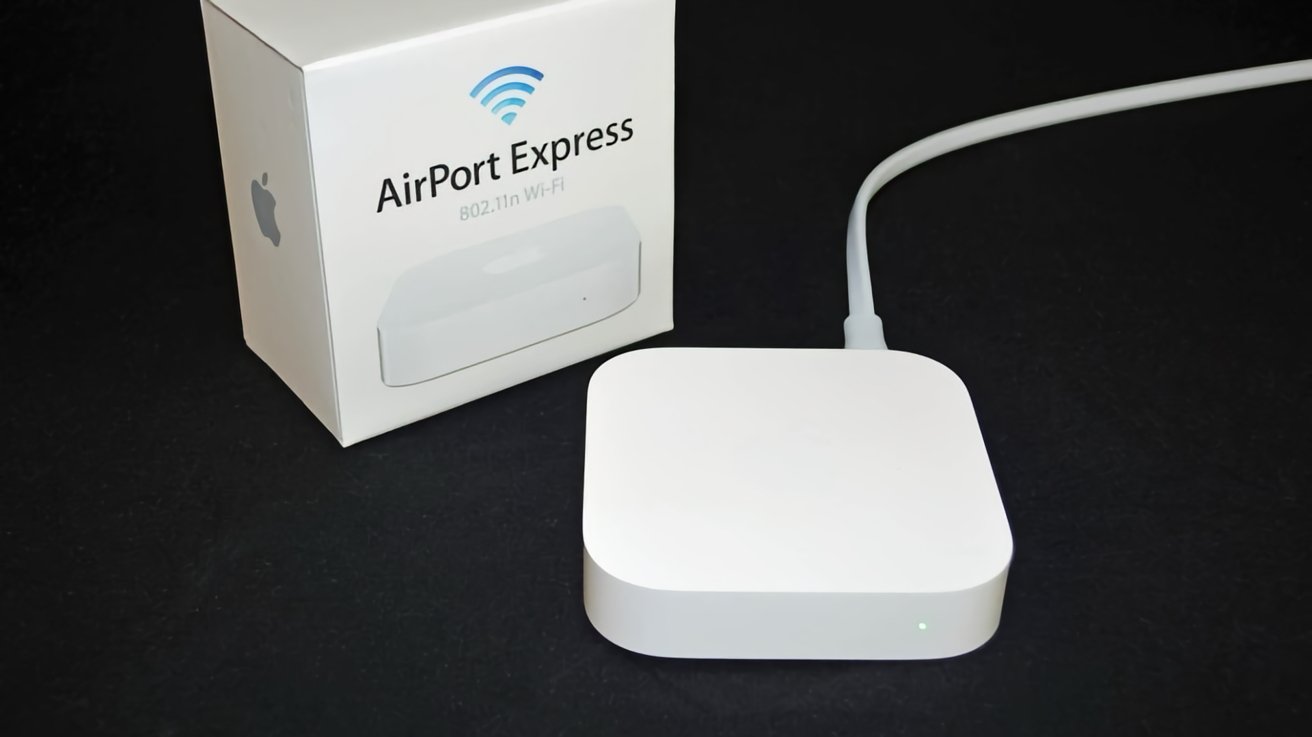

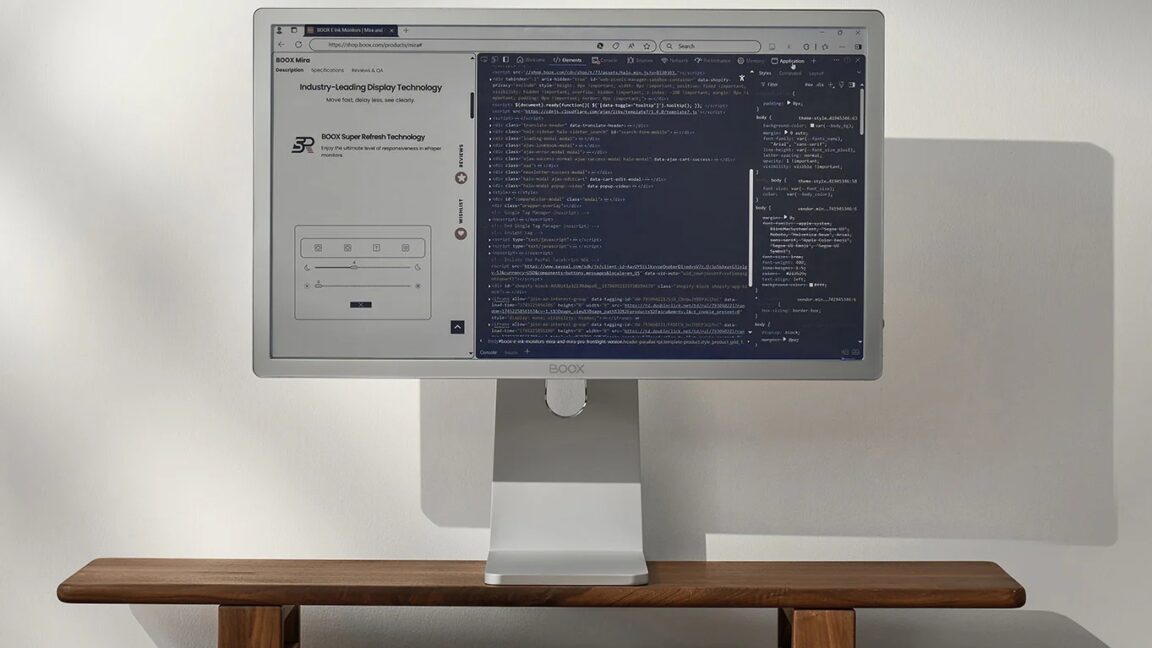








































































.webp?#)































































































































![[The AI Show Episode 145]: OpenAI Releases o3 and o4-mini, AI Is Causing “Quiet Layoffs,” Executive Order on Youth AI Education & GPT-4o’s Controversial Update](https://www.marketingaiinstitute.com/hubfs/ep%20145%20cover.png)


































































































































































































































































